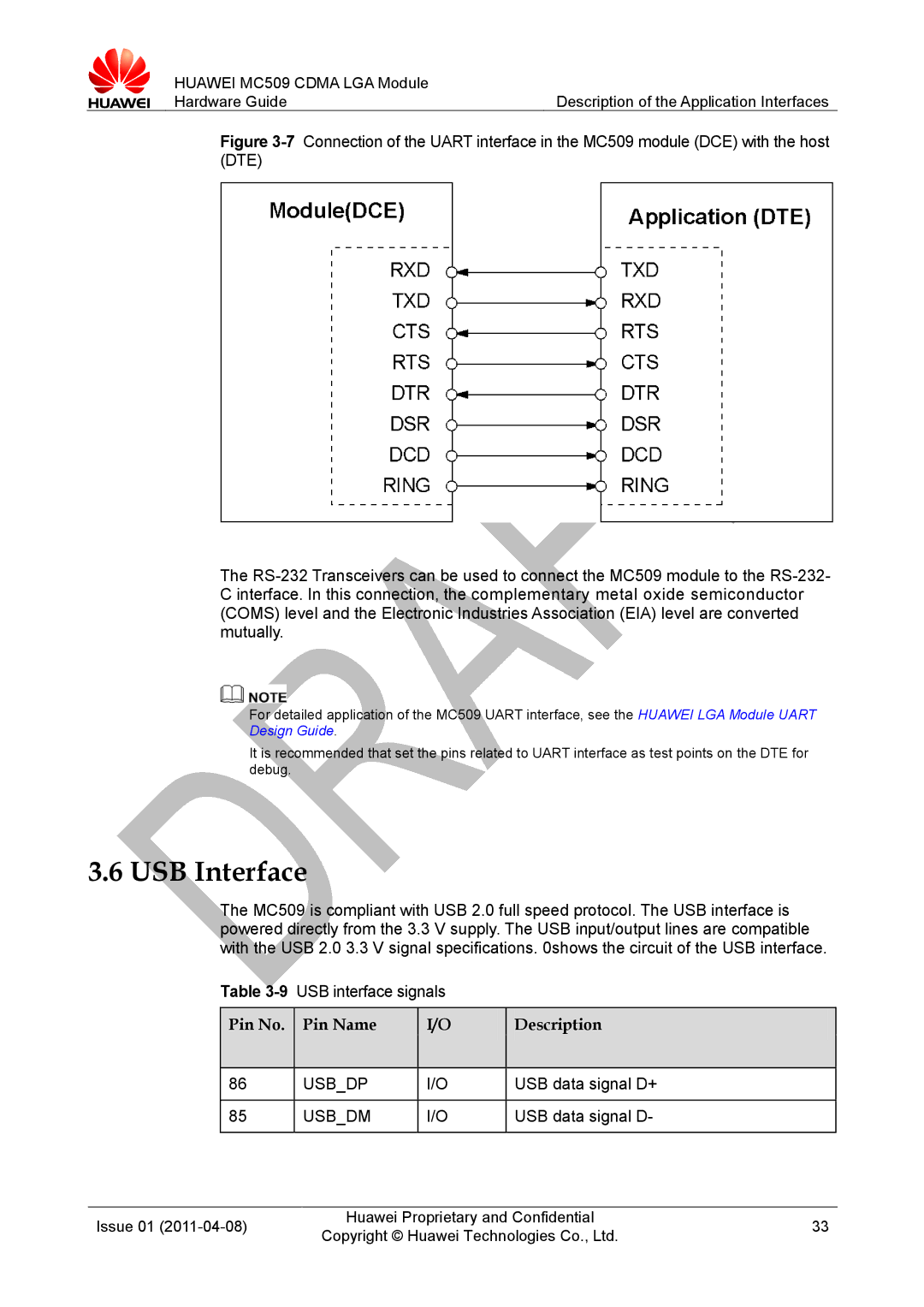MC509 CDMA LGA specifications
The Huawei MC509 CDMA LGA (Local Gateway Access) is a versatile and efficient communication device designed for CDMA (Code Division Multiple Access) networks. It serves as a gateway that facilitates high-speed data transmission and reliable voice services in mobile communications. This device is particularly well-suited for businesses and service providers looking to enhance their CDMA infrastructure.One of the standout features of the Huawei MC509 is its ability to support multiple user connections simultaneously. This capability allows it to handle a large volume of calls and data transfers, making it ideal for environments with heavy communication demands. The device is built with robust processing power, ensuring it can manage traffic effectively without any degradation in service quality.
In terms of technology, the Huawei MC509 is designed to seamlessly integrate with existing CDMA networks. It employs advanced signal processing techniques to optimize call quality and data throughput. Additionally, the device supports a variety of bandwidth options, which ensures flexibility in deployment based on specific network requirements.
The MC509 also boasts a modular design, allowing for easy upgrades and scalability. As network demands evolve, service providers can expand the functionality of the device by adding new modules without the need for significant hardware changes. This future-proofing aspect makes it a smart investment for organizations aiming to grow their communication capabilities over time.
Security is another critical characteristic of the Huawei MC509. It features comprehensive security protocols to ensure that voice and data transmissions remain private and secure from unauthorized access. This focus on security makes the device suitable for enterprises that handle sensitive information.
Moreover, the Huawei MC509 has been engineered for energy efficiency. Its smart power management capabilities not only reduce operational costs but also contribute to a greener technology solution. This aspect is increasingly important in today’s environmentally conscious market.
Overall, the Huawei MC509 CDMA LGA is a powerful and adaptable communication solution. With its superior call handling capacity, integration capabilities, modular design, security features, and energy efficiency, it stands out as an essential tool for enhancing CDMA network infrastructure. Organizations that invest in this device will benefit from improved communication services, ultimately leading to increased productivity and customer satisfaction.

